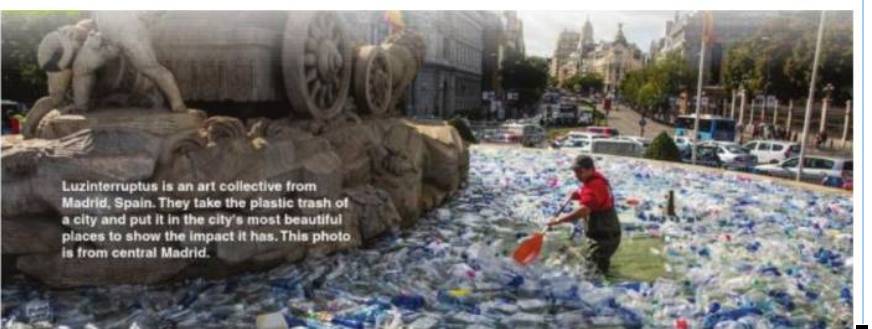Have you ever entered a tropical rainforest? It’s a special, dark place completely different from anywhere else. A rainforest is a place where the trees grow very tall. Millions of kinds of animals, insects, and plants live in the rainforest. It is hot and humid in a rainforest. It rains a lot in the rainforest, but sometimes you don’t know it’s raining. The trees grow so closely together that rain doesn’t always reach the ground.
Rainforests make up only a small part of the Earth’s surface, about six percent. They are found in tropical parts of the world. The largest rainforest in the world is the Amazon in South America. The Amazon covers 1.2 billion acres, or almost five million square kilometers. The second largest rainforest is in Western Africa. There are also rainforests in Central America, Southeast Asia, Northeastern Australia, and the Pacific Islands.
Rainforests provide us with many things. In fact, the Amazon Rainforest is called the “lungs of our planet” because it produces twenty percent of the world’s oxygen. One fifth of the world’s fresh water is also found in the Amazon Rainforest. Furthermore, one half of the world’s species of animals, plants, and insects live in the Earth’s rainforests. Eighty percent of the food we eat first grew in the rainforest. For example, pineapples, bananas, tomatoes, corn, potatoes, chocolate, coffee, and sugar all came from rainforests. Twenty-five percent of the drugs we take when we are sick are made of plants that grow only in rainforests. Some of these drugs are even used to fight and cure cancer. With all the good things we get from rainforests, it’s surprising to find that we are destroying our rainforests. In fact, 1.5 acres, or 6,000 square meters, of rainforest disappear every second. The forests are being cut down to make fields for cows, to harvest the plants, and to clear land for farms. Along with losing countless valuable species, the destruction of rainforests creates many problems worldwide. Destruction of rainforests results in more pollution, less rain, and less oxygen for the world.
Câu 33: What is the focus of this reading?
A. Kinds of forests B. Facts about rainforests
C. Where rainforests are located D. How much oxygen rainforests make
Câu 34: The word “humid” in paragraph 1 is closest in meaning to ______.
A. wet B. cloudy C. foggy D. rainy
Câu 35: Rainforests provide human all of the following EXCEPT?
A. Fresh water B. Oxygen
C. lungs of the world population D. Drugs used to fight and cure cancer
Câu 36: Why is the Amazon Rainforest called the “lungs of the planet”?
A. It helps circulation. B. It provides much of our air.
C. It uses much of the world’s oxygen. D. It helps us breathe.
Câu 37: Where would you NOT find a rainforest?
A. Australia B. South America C. Canada D. Vietnam
Câu 38: The world “all” in paragraph 3 refers to _______.
A. rainforests B. drugs people use C. food people eat D. the world’s species
Câu 39: The word “harvest” in paragraph 3 is closest in meaning to ______.
A. gather B. reduce C. destroy D. create
Câu 40: What is the most likely reason why the author is surprised that we are destroying rainforests?
A. They are necessary for the health of our planet.
B. It will be too expensive to replant them.
C. It will be too difficult to grow food without them.
D. They are necessary for the fight against cancer.







We can raise awareness in our community and support the products of companies that are committed to reducing deforestation.
(Chúng ta có thể nâng cao nhận thức trong cộng đồng của mình cũng như hỗ trợ các sản phẩm của các công ty cam kết giảm nạn phá rừng.)